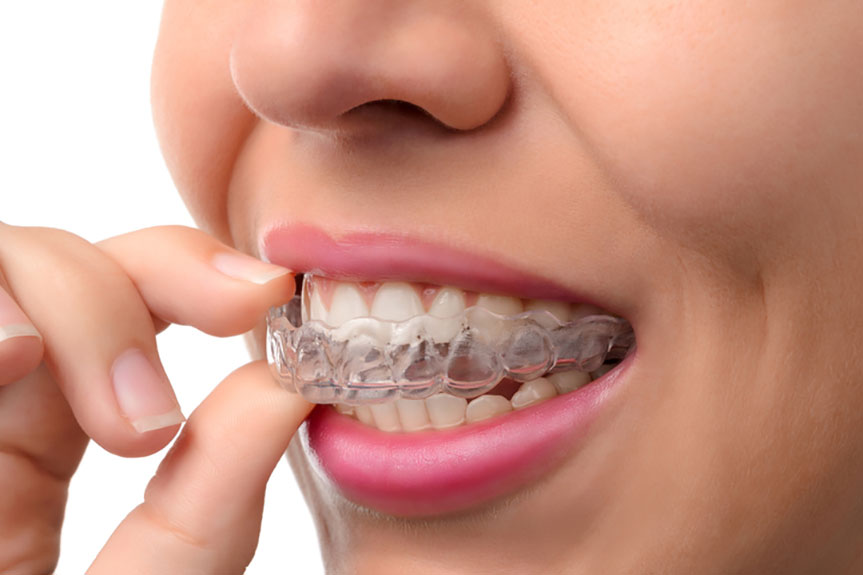Invisalign Pros and Cons
Many individuals suffer the embarrassing problem of having misaligning or overcrowded teeth. One way of correcting an alignment issue is wearing braces; however, as more teens and adults require their teeth straightened, consider Invisalign as another possible option. Invisalign is a clear collection of plastic aligners specially tailored to fit into your mouth, recommended to be checked every two months and replaced if they no longer help systematically align teeth correctly. Invisalign aligners are often preferred among teenagers and adults due to being virtually undetectable due to being clear. But like anything, Invisalign comes with both advantages and drawbacks which must be carefully considered before opting to receive your aligners from either your dentist or orthodontist.
Invisalign Pros and Cons
Pros of Invisalign
There are various advantages associated with choosing Invisalign over traditional metal braces for treating dental conditions, and here are just a few benefits of the aligners made of clear material:
- Comfort: For Comfort Invisalign can provide greater physical and psychological comfort compared to braces or wires and brackets, since you won’t risk pain-inducing cuts or nicks in the mouth from braced wires and brackets; they are soft enough not to cause irritation to your mouth – the aligners act more like an oral guard without sharp edges than they did a few decades ago!
- More Attractive: Invisalign Is More Appealing Since it is transparent and doesn’t cover your mouth with metal, Invisalign makes for more appealing visuals; many won’t even be aware that you have them on! That way you don’t feel self-conscious when smiling as there’s no age restriction to using Invisalign treatment; many adults prefer this form of care as well.
- Convenient: Invisalign has quickly become the go-to solution for straightening teeth without metal braces being necessary, providing greater convenience since these devices are readily available and widely accessible.
- Can be Removed: Invisalign aligners can be easily taken out for eating, brushing and flossing purposes – something not possible with conventional braces – so as not to block access while maintaining more hygiene within your mouth while aligning teeth straighter. This allows you to enjoy what foods you desire while at the same time decreasing gum disease risk; alternatively you will no longer worry about food particles becoming lodged between conventional brackets and food debris accumulation as much.
- Low Maintenance Requirements: Invisalign aligners require minimal upkeep. They may become discolored as you wear them over time; to clean these aligners easily use a soft bristled toothbrush dipped into some bleach-water mixture for one minute of rubbing, followed by another minute’s worth of vigorous scrubbing everyday – simply follow this routine until any stain has been eradicated from their surfaces.

Cons of Invisalign
Unfortunately, Invisalign doesn’t come without drawbacks; these include clear aligners which might compromise visibility during wear; as well as its cost.
- Costly: One of the key drawbacks of Invisalign is their high price point – uninsured dental plans won’t cover it and costs can range anywhere between $3,500 and $8000 depending on how aggressively treatment plans are administered. Therefore if money is tight for any reason (ie: you need accessing college savings accounts of your child for instance), considering Invisalign might not be beneficial at this time.
- More Attractive: Attachments that accompany Invisalign have become increasingly common. Usually consisting of enamel ridges which adhere directly to your teeth like regular braces’ brackets do, attachments connect directly with aligners for increased comfort and effectiveness in moving teeth in their proper places – as well as making Invisalign visible and creating the appearance that you’re actually wearing braces!
- Mandatory: Wear For 22 Hours per day Invisalign must be worn at least 22 hours every single day, typically being taken off only for eating and daily dental hygiene; if going out on an intimate date or attending any gathering it’s required that it is put back on.
- Can be Removed: Teeth Discomfort Receiving new Invisalign aligner trays could be painful and uncomfortable as your teeth adjust to them – usually termed pressure by dentists – though an anti-inflammatory medication could help ease some discomfort as your body adjusts.
